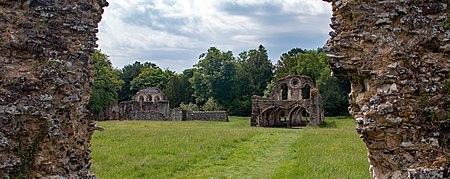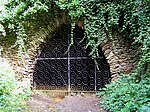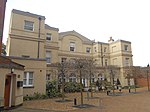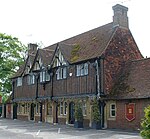Waverley Abbey

Waverley Abbey was the first Cistercian abbey in England, founded in 1128 by William Giffard, the Bishop of Winchester. Located about 2 miles (3.2 km) southeast of Farnham, Surrey, it is situated on a flood-plain; surrounded by current and previous channels of the River Wey. It was damaged on more than one occasion by severe flooding, resulting in rebuilding in the 13th century. Despite being the first Cistercian abbey in England, and being motherhouse to several other abbeys, Waverley was "slenderly endowed" and its monks are recorded as having endured poverty and famine. The abbey was suppressed in 1536 as part of King Henry VIII's Dissolution of the Monasteries. Subsequently, largely demolished, its stone was reused in local buildings, likely including "Waverley Abbey House", which was built in 1723 in the northern portion of the former abbey precinct. Waverley Abbey House, the ruins of the abbey and the surrounding land are all part of a conservation area. The house is a Grade II* listed building and the ruins a scheduled monument.The ruins of the abbey are currently managed by English Heritage and open to the public.
Excerpt from the Wikipedia article Waverley Abbey (License: CC BY-SA 3.0, Authors, Images).Waverley Abbey
Waverley Lane, Waverley
Geographical coordinates (GPS) Address Website External links Nearby Places Show on map
Geographical coordinates (GPS)
| Latitude | Longitude |
|---|---|
| N 51.2 ° | E -0.76 ° |
Address
Waverley Abbey
Waverley Lane
GU9 8EP Waverley
England, United Kingdom
Open on Google Maps










